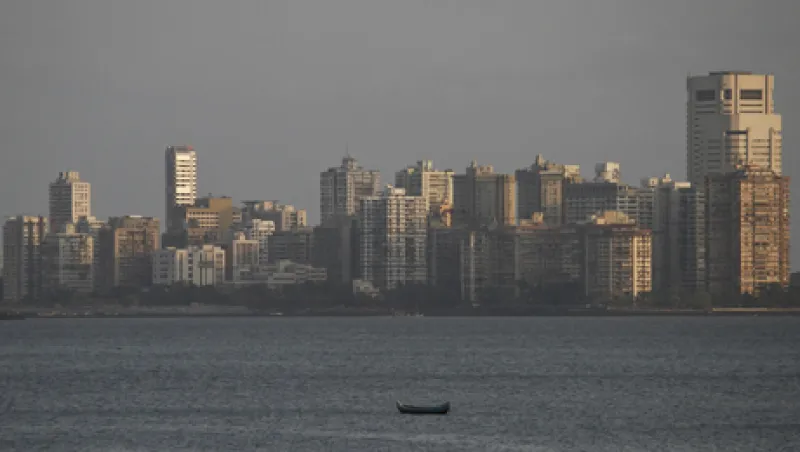At times frustrated foreign investors and multinationals feel as if India, under the weight of its suffocating bureaucracy, will come to a complete halt. At the end of July it did — India suffered the biggest power outage in global history, affecting 620 million people. This rather undignified world record threw a light on the problems damaging the country’s economic and corporate life.
The power stoppage can, admittedly, partly be blamed on something outside India’s control — a rather dry monsoon, which had caused a surge in electricity usage by farmers anxious to irrigate their crops and concomitantly reduced available hydropower. The monsoon is also likely to boost inflation by reducing food supplies.
With inflation persistently above the central bank’s unofficial target of about 5 percent, the central bank has been unable to follow April’s 50 basis point cut in its benchmark interest rate with further rate reductions — leaving the rate at 8 percent. As a result, the economy has not received the strong monetary boost that kept growth high in 2009 as the credit crunch raged across the world. Partly for this reason, gross domestic product growth was only 5.3 percent year-over-year in the first quarter, which is the lowest in eight years. On Friday the economic advisers to Manmohan Singh, India’s prime minister, cut their forecast for growth in the year to March 2013 from between 7.5 and 8 percent to 6.7 percent, though even this was rather a reluctant nod to reality, as most economists’ estimate a further percentage point or so lower.
Another factor out of India’s control is the global downturn in international trade. Exports slumped by 15 percent year-over-year in July, according to figures published Tuesday — hit by weak demand in the U.S. and Europe. By hitting the revenue of export-focused sectors such as IT services, this has hindered the equity market’s recovery from last year’s slump. The S&P CNX Nifty index of Indian large-cap stocks is up only 6 percent on the year, leaving it still 16 percent below its November 2010 peak.
But India’s most intractable problems are homegrown.
Analysts think the Congress party-led coalition government’s policy of high spending on developing rural areas will continue as the general elections of 2014 draw nearer and politicians look to splash cash on vote-winning causes — putting further upward pressure on a fiscal deficit (including central and state government spending) of 7.1 percent of GDP for the year ending March 2012. The persistently high deficit, kept wide by current spending on flagship projects such as the National Rural Employment Guarantee Act, has worried overseas institutional investors. They regard it as a source of instability for the economy and hence the equity market since it creates a large current account deficit for India that has to be financed by unreliable foreign capital inflows. In 2011 India suffered severe outflows, which depressed its stock market and currency, as investors responded to fears about global growth by liquidating emerging-markets assets.
But the worst domestic problem is possibly the red tape, which is both curtailing investment spending and reducing the return on investment for capital expenditure. The July power outage reflected a lack of supply, caused largely by red tape: The growth in the supply of coal is being hit by a bottleneck in clearances for projects, as the authorities consider the environmental implications of coal investments. The infrastructure and construction sectors are also slowed down by the heavy hand of government regulations governing the environment, and chaotic rules governing the acquisition of land. The result of excessive bureaucracy is a lack of supply that ranges from food to manufactured goods — keeping inflation structurally high.
Do these problems make India a no-go area for equity investors? Nomura recommends an underweight position in infrastructure and construction, citing policy issues as well as a likely slowing in the investment cycle and labor shortages. Speaking generally about sectors heavily affected by government policy, including infrastructure, it says that “ambiguity” and “flip-flops” in policy have “not helped to provide an enabling regulatory framework for risk capital to chase long-term returns”.
However, it is overweight consumer staples, such as fast-moving consumer goods, that are bought by hundreds of millions of relatively low-income rural households. Nomura says, “Empowerment of the rural consumer is enduring, in our opinion, and rural income growth may be a multiyear process.” Consumption per head in rural areas jumped 18 percent in real terms in the year ending March 2012, thanks partly to high government spending — though analysts complain that much government expenditure is poorly directed and neither aids the poor nor improves infrastructure.
Leif Eskesen, economist for India and the Association of Southeast Asian Nations at HSBC in Singapore, shows a certain guarded optimism about clearing the thicket of regulations that are largely behind India’s capacity crisis — some of which have taken root over decades of excessive bureaucracy. “Big-bang reforms are unlikely in the short term due to political constraints and upcoming general elections,” he says. Nevertheless, “we could see progress on a number of fronts,” including an easing of the rules for foreign direct investment and a pending bill that introduces greater clarity and potentially greater speed into the rules for land acquisition by companies for big projects.
Eskesen, however, is under no illusions about the ability of Indian politicians to regulate economic growth into oblivion: “One of the key risks to the growth outlook is the persistence of domestic policy paralysis, which could prevent a step up in reform implementation.”






